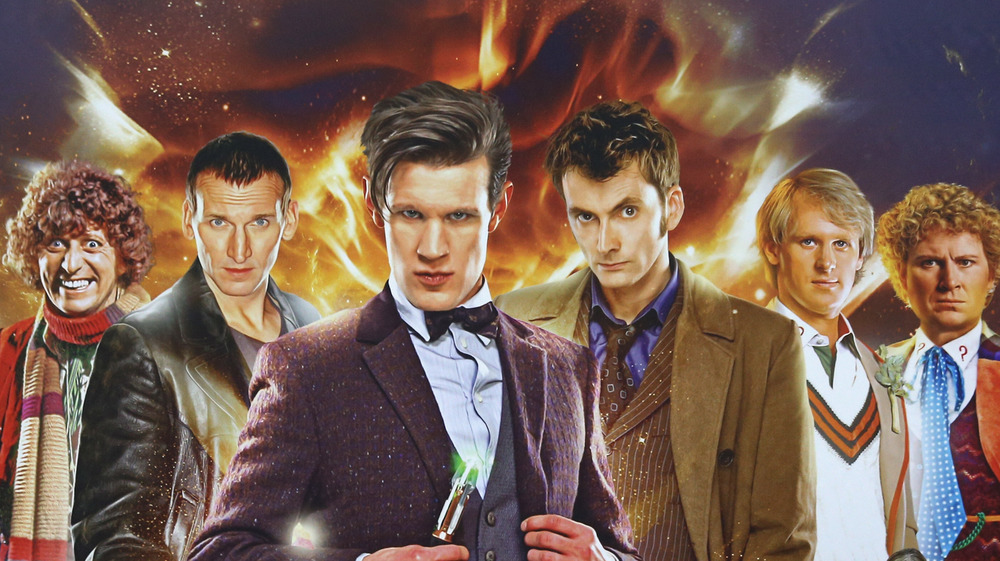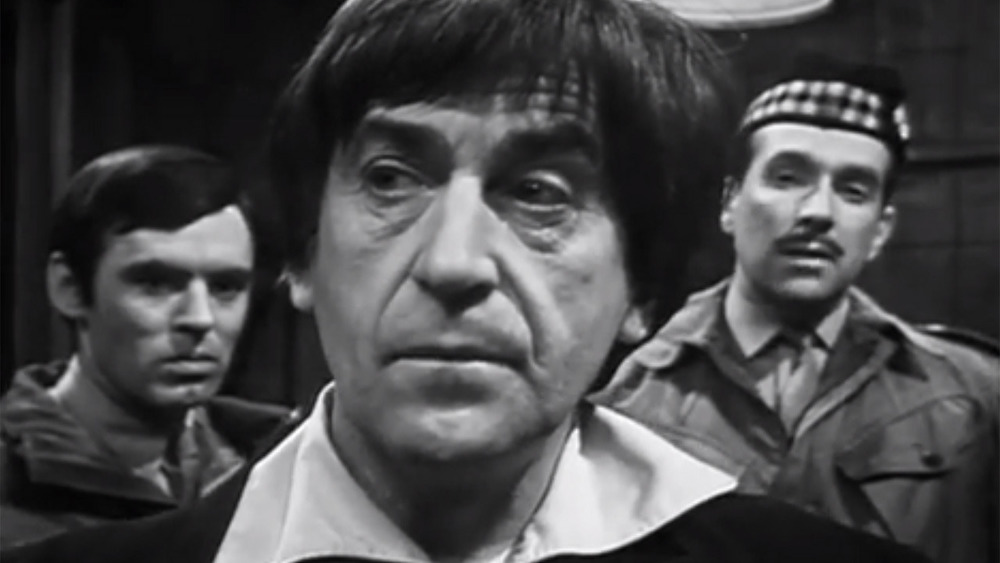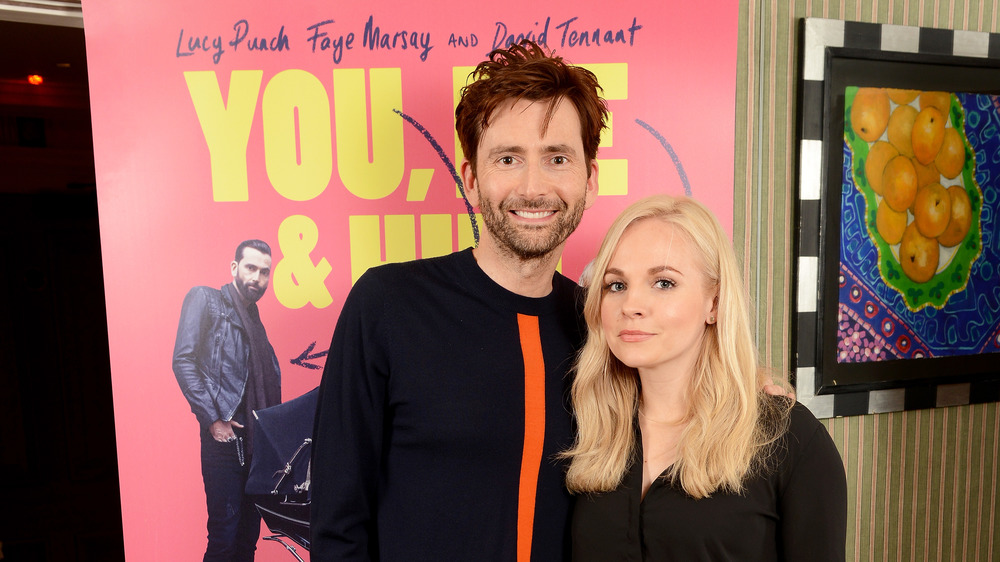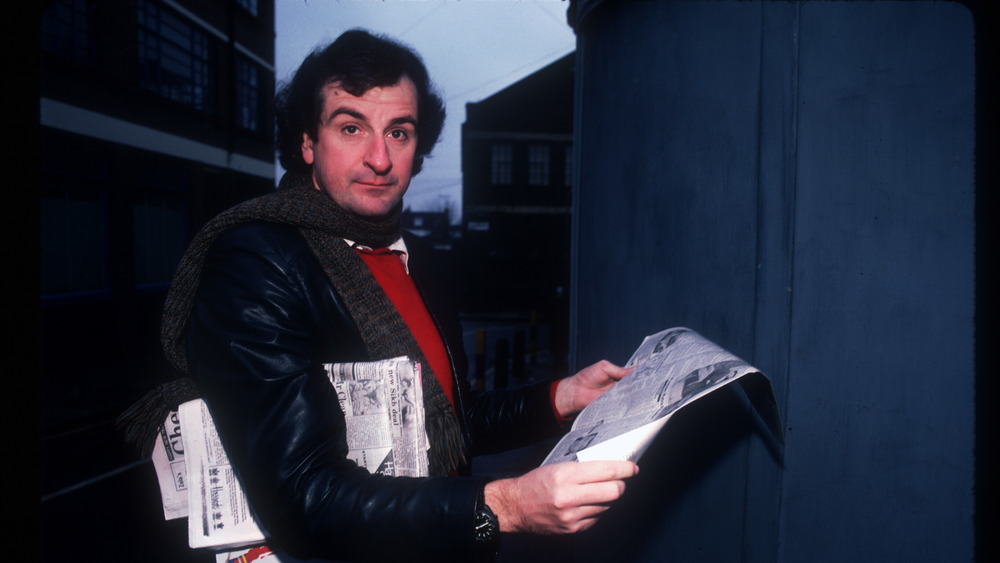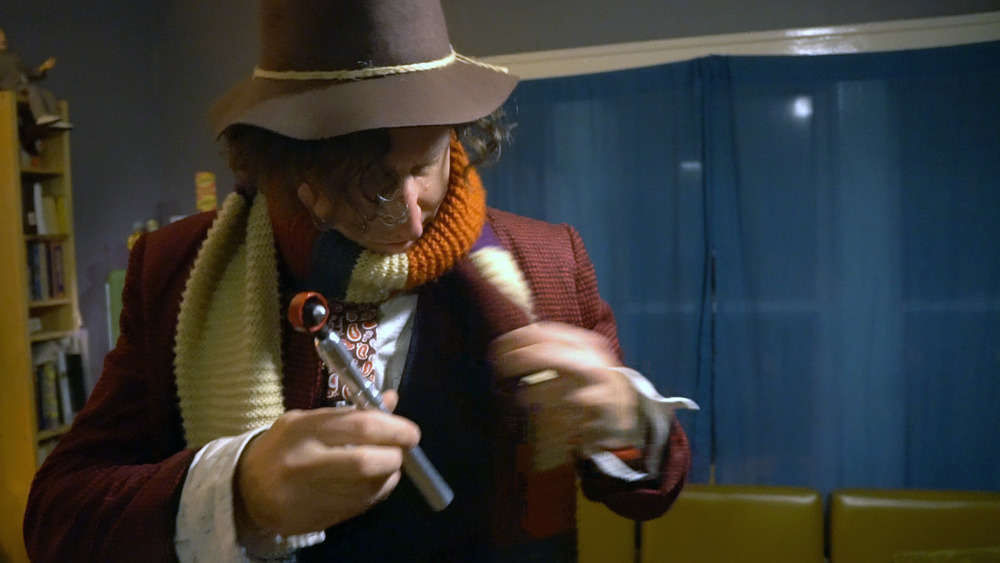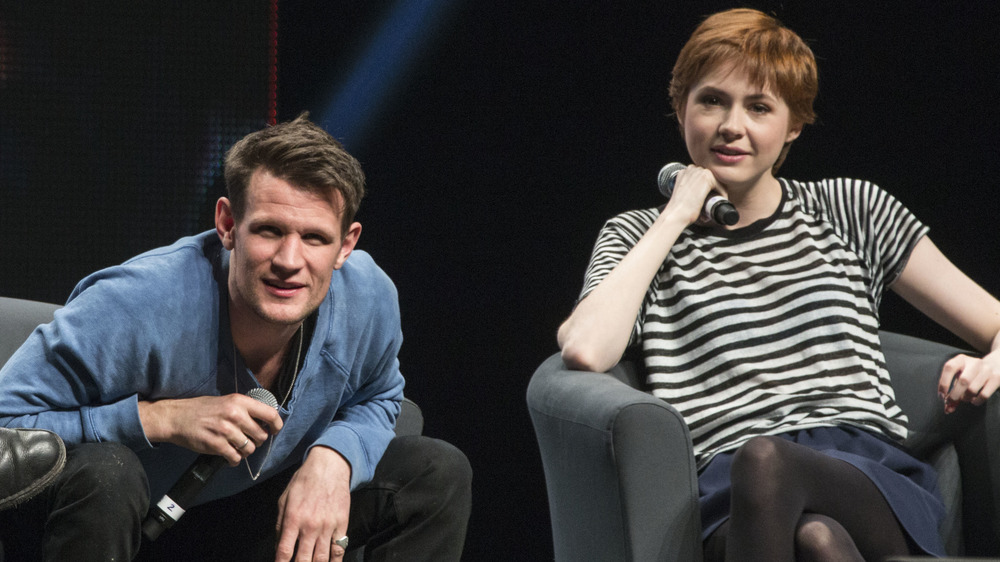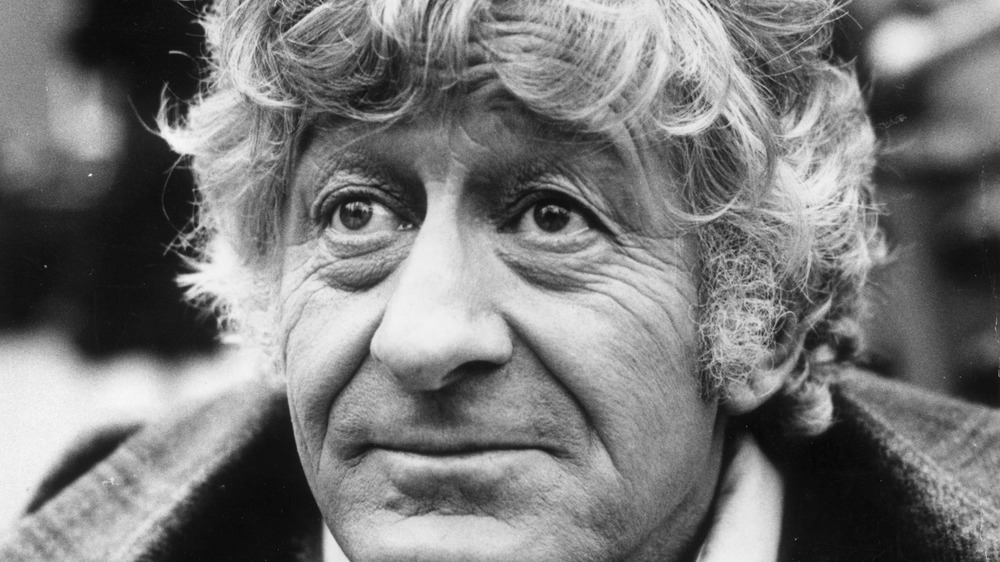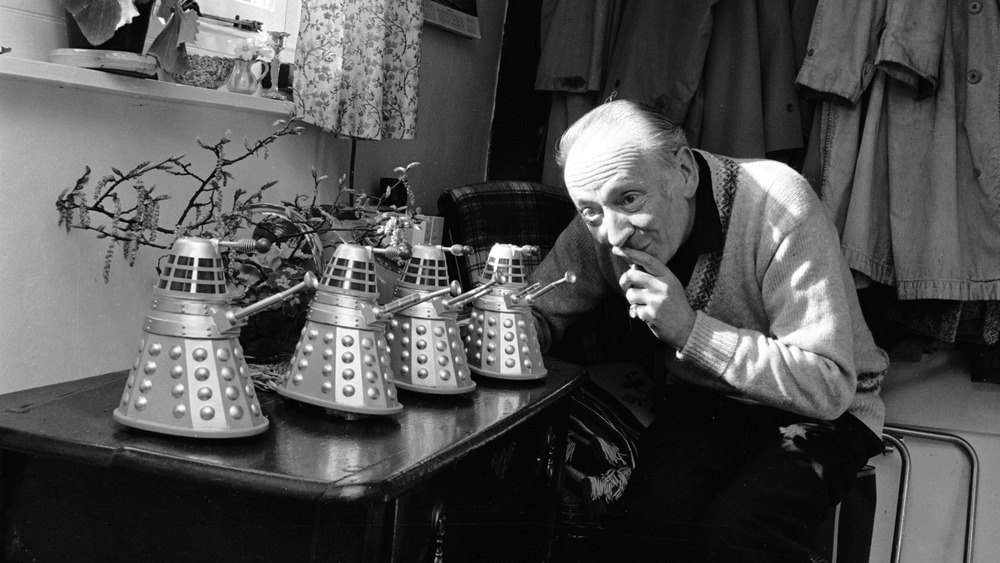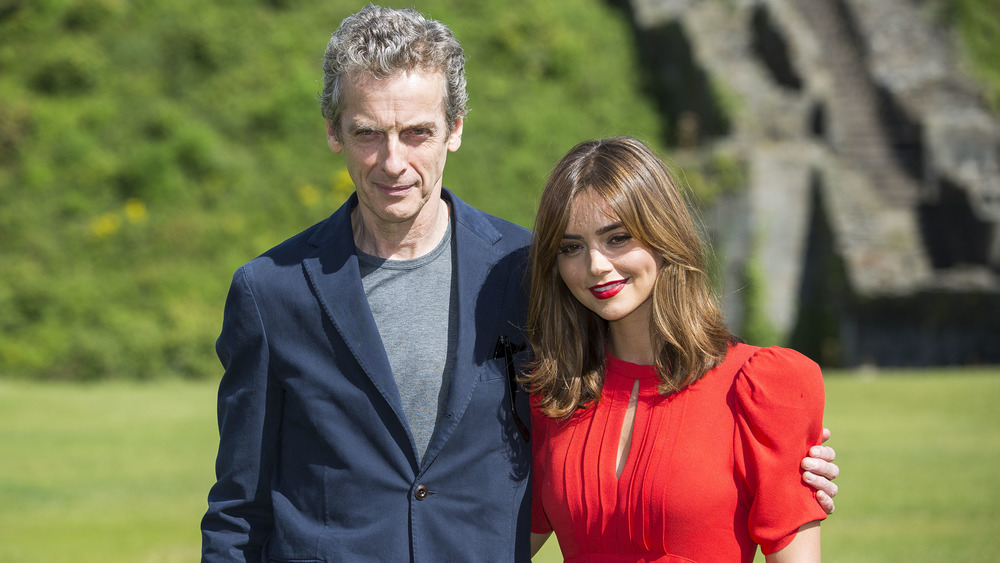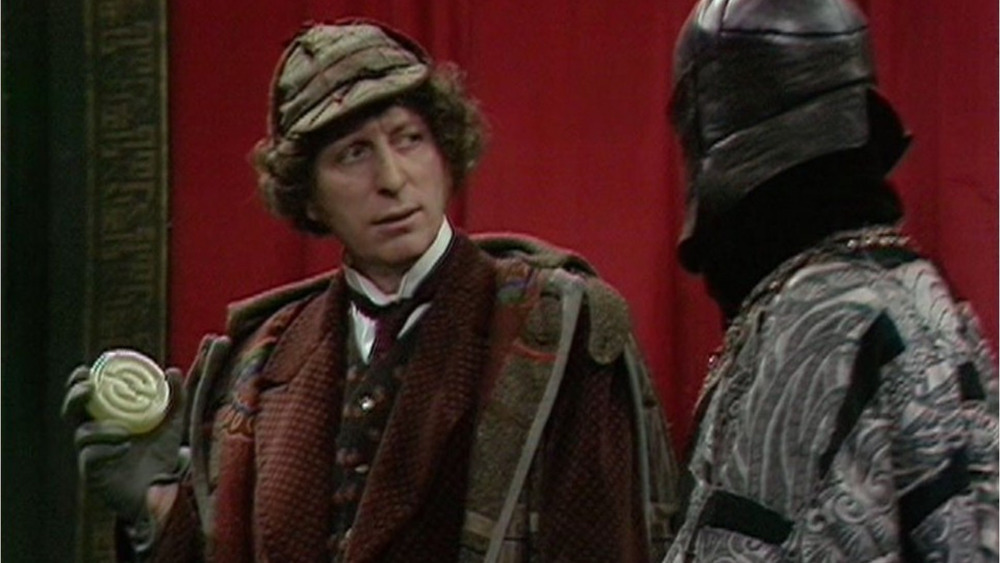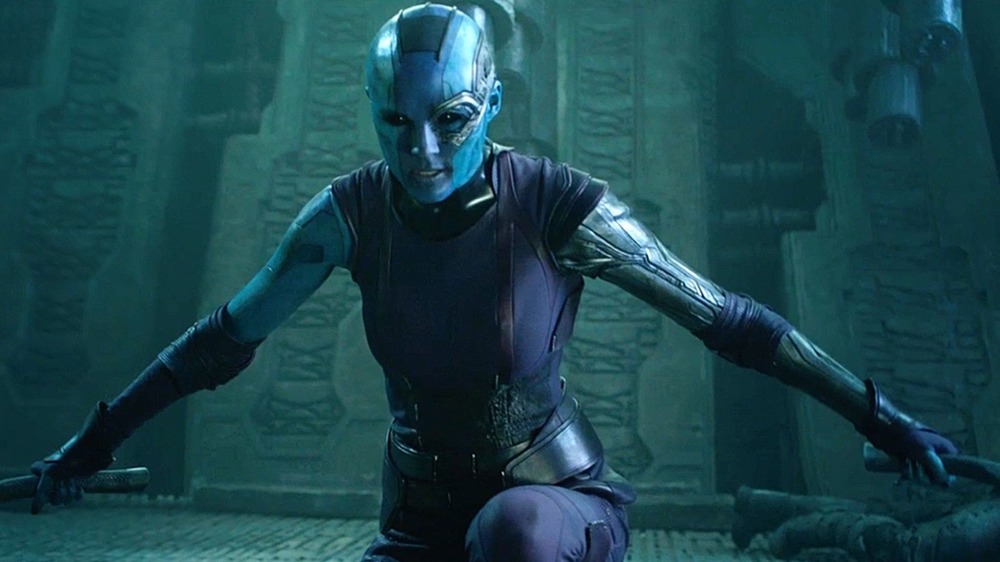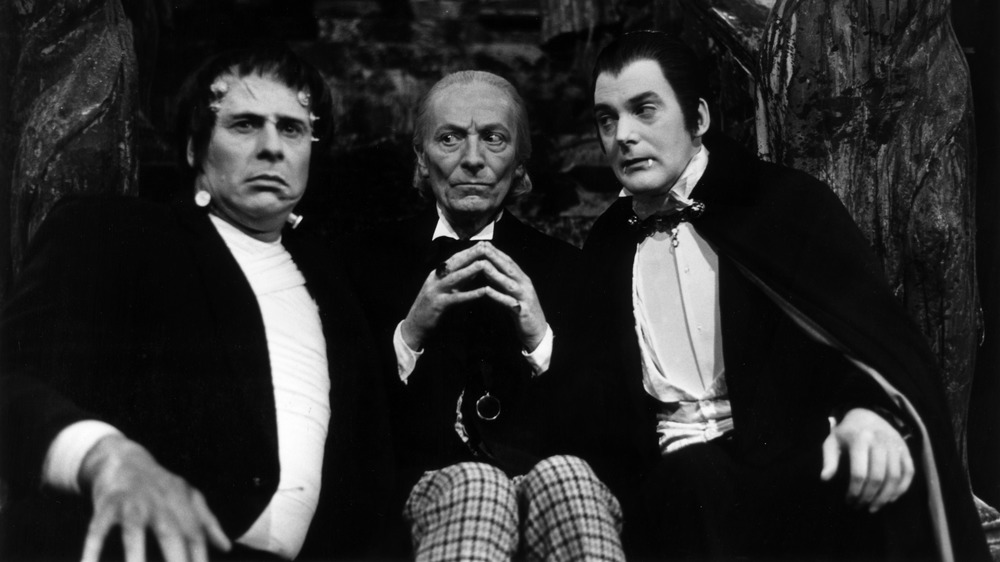Things Only Superfans Know About Doctor Who
Doctor Who is one of the oldest and most beloved programs in television history. It's had its ups and downs over the years — beginning life in 1963 as educational children's television, it became a sensation that fundamentally reshaped British pop culture, only to suffer ratings decline and cancellation in 1989. After the franchise lay largely dormant through the '90s, a new and improved version burst onto the scene in 2005, kicking off a critically acclaimed run of seasons that continues to this day. And just as the original Doctor Who left its mark on multiple generations of science fiction fans, so too has the relaunched show taken its place in the pop culture pantheon.
With so much history to work with, there's a deep well of Doctor Who knowledge available to the dedicated viewer, both in front of the camera and behind the scenes. You might be able to name all the actors who've starred as Doctor Who, but there's so much more to learn about this fascinating series. Get ready to step through the police box doors and discover that Doctor Who fandom, like the TARDIS itself, is bigger on the inside.
Doctor Who's lost episodes
If you're getting into Doctor Who for the first time, at some point you'll probably think to yourself, "I should go back and watch this from the beginning." Unfortunately, that's not as easy as it sounds.
In the 1960s, when the first two Doctors went scampering through time, television was in its infancy, and still used mostly as broadcast theater. There was no existing mechanism at the BBC for keeping video recordings after they'd been aired, and since home video wasn't yet a thing that existed, there was no real reason to do so. The BBC aired each episode, copied it onto film for international distribution, then wiped or taped over the original videos for cost and storage reasons. When color television came around and people lost interest in black and white, even the film sent to other countries started getting junked. In total, 152 episodes were lost.
When Doctor Who enjoyed a rise in popularity in the 1970s, the BBC finally decided to go looking for the lost episodes, enlisting fans across the world in a vast reclamation project. They were found in private collections and television archives, from Nigeria to New Zealand, in the back of a cupboard and in the basement of a church. Today, 97 episodes remain missing, but even those are not entirely gone — thanks to devoted fans, audio recordings of every Doctor Who episode have been recovered, and the BBC has begun releasing animated versions of the lost episodes with their original audio.
Guess who's coming to dinner?
David Tennant is probably the most widely recognized actor to play the Doctor, having starred in three seasons of the show after its revival in 2005. Tennant grew up loving Doctor Who and always wanted to play the character, citing it as a major influence on his acting career. Not only did he end up as many fans' favorite doctor, but he also found himself married to Doctor Who at a much more personal — and literal — level.
Tennant's final season on Doctor Who includes an episode called "The Doctor's Daughter," in which soldiers extract some of the Doctor's DNA at gunpoint and use it to make a female clone of him. The clone was played by an actor named Georgia Moffett, and after meeting on set for the episode, she and Tennant hit it off and began a relationship, ultimately marrying in 2011. The kicker is that Georgia Moffett actually is a Doctor's daughter — her father, Peter Moffett, was the fifth man to play the Doctor under his stage name, Peter Davidson.
Moffett's character is shot and killed during the climax of "The Doctor's Daughter," but the episode ends with her coming back to life and heading out into space in search of adventure. However, the character never returned to the show, leaving her fate unknown despite the clamoring of the fanbase. That changed in 2018, when an audiobook series starring Moffett was produced, allowing the rest of her story to finally be told.
Writing connections
Doctor Who has existed since 1963, and over the years, it has woven itself into the fabric of British culture. The show's history intertwines with some of England's most iconic authors. Douglas Adams served as script editor for Doctor Who's 17th season in the late 1970s, around the same time he was broadcasting — and then novelizing — his radio play The Hitchhiker's Guide To The Galaxy. He also wrote three episodes, though one, "Shada," was never produced due to a strike at the BBC. In 2017, the episode was finally brought to life, with the incomplete original footage combined with animation and voiceover from a returning Tom Baker in the lead role.
Actor and writer Stephen Fry also penned an episode of Doctor Who that never aired, this time for the relaunched version of the series. Though the script never made it into production, it was reportedly inspired by the Arthurian legend of Gawain and the Green Knight. Notable British writers whose scripts did end up making the cut include Men Behaving Badly creator Simon Nye, acclaimed romantic comedy screenwriter Richard Curtis, and author and comic book writer Neil Gaiman.
Additionally, the late 1970s saw the birth of what's now known as Doctor Who Magazine, history's longest-running TV tie-in, which included among its features comic strips involving the Doctor Who cast. Doctor Who Monthly, as it was named at the time, served as a launchpad for several legendary British comic scribes, most notably Alan Moore and Grant Morrison.
Sonic resonance
Doctor Who hasn't just influenced English science fiction, English comics, and English acting — it's also influenced the English language. In 2017, the term "sonic screwdriver," referencing the handheld mechanical device that is the Doctor's preferred tool, was added to the Oxford English Dictionary. It wasn't the first time a word originating in Doctor Who made its way into the OED. In 2002, the dictionary added "tardis" to its official lexicon. The TARDIS (Time And Relative Dimension In Space) is the "bigger on the inside" police box that allows the Doctor to travel through space and time, but the dictionary definition of the term is broader, with its first entry being "the type of something with a larger capacity than its outward appearance suggests, or with more to it than appears at first glance." Despite its original status as an acronym, "tardis" has become so adaptable that the dictionary considers it a word in its own right.
"Cyberman," a popular Doctor Who enemy, made it into the OED in 2009 as a derivative of "cyber," which also included terms like cybercrime, cybersecurity, and cyberterrorism. But it's the Doctor's oldest and most legendary foe that reached the dictionary first. "Dalek" appeared in the OED in 1989, demonstrating the profound cultural resonance held by the villainous aliens. Thanks to Doctor Who's origins as a children's show, the Daleks are well-known for driving its young viewers to hide behind the sofa, a phrase that has itself made its way into the mainstream.
Terms of service may vary
Dozens of characters have served in the role of "companion," a human that leaves Earth to travel alongside the Doctor. Some companions are with the Doctor for a single episode; others last years. Jamie McCrimmon, played by Frazier Hines, owns the record for most individual episodes as the Doctor's companion. Hines' original run included 113 episodes, the most of anyone not playing the Doctor himself. However, the first 26 seasons of Doctor Who consist of multi-part stories that took numerous episodes to complete — McCrimmon's final story, "The War Games," was a ten-parter. As a result of the relaunched series' change in format, Karen Gillan's Amy Pond has appeared in the most individual stories — 25 total. And Janet Fielding spent the most real time in the role, portraying Tegan Jovanka for three years from 1981 to 1984.
Until recently, Rose Tyler, played by Billie Piper, was the only companion to have accompanied an incarnation of the Doctor (the Ninth) for every single one of his adventures. But the companions of the Thirteenth Doctor have recently challenged that claim, as Graham O'Brien, Ryan Sinclair, and Yasmin Khan have been present in each of her episodes. O'Brien and Sinclair decided to remain on Earth during the 2021 Christmas special, "Revolution of the Daleks," leaving Mandip Gill's Khan ready to continue her streak into the upcoming season. Khan is also in a strong position to break both Amy Pond's record for total stories and Tegan Jovanka's record for total time.
Filling in the blanks
Doctor Who has by this point spread so far in the landscape of pop culture that even casual fans have likely picked up a few things by osmosis. Many people, for example, probably know that the Doctor is something called a Time Lord — the name of the character's species, as it turns out — and some may have heard mention of their home planet, Gallifrey. What casual fans might not know is that neither name was originally a part of the show. In fact, it took years for them to fall into place, despite being part of the backstory of the series protagonist.
The Doctor's species didn't get a name until the show's sixth season in 1969, after the Doctor had already endured his first regeneration. The story that introduced it, "The War Games," marked the first appearance of Time Lords aside from the Doctor himself. Gallifrey, meanwhile, didn't get a mention until "The Time Warrior," a story that aired at the end of 1973 and the beginning of 1974, more than a decade after the show began. It was coined by writer Robert Holmes, who would also be the first Who writer to send the Doctor back to his home planet in 1976.
Dalek design
Unlike the Time Lords and Gallifrey, the Daleks were part of Doctor Who essentially from the beginning, having been introduced in the show's second overall story. In an alternate universe not too many degrees off from this one, the Daleks might have been designed by Ridley Scott, who would go on to win science fiction fame and acclaim thanks to his films Blade Runner and Alien. Scott was a BBC set designer at the time, and was scheduled to work on the episodes that would see the Daleks enter Doctor Who. But prior to the start of production, Scott left the BBC for Granada Television in Manchester, where he would train for the profession he would ultimately become known for: directing. As a result, we'll never know what the Daleks might have looked like if imagined by the mind behind the xenomorphs.
Instead, the Daleks were designed by Ray Cusick, who took a more practical approach to the process. Cusick's design made it easy for the person inside the Dalek to operate it, made it so their eyes glowed when they talked for the benefit of the viewer, famously incorporated a sink plunger, and was aesthetically inspired by moving a pepper pot across a table — though Cusick later admitted it could have been salt.
Casting shadows
Doctor Who has a long history of re-using actors. When casting a new recurring character (or the regenerated version of an old recurring character) the show will often recruit someone who had shown up previously in a smaller role. Colin Baker was cast as the Sixth Doctor in 1984, a year after playing Commander Maxil, a member of Gallifrey's Chancellory Guard (who actually shoots the Fifth Doctor in the story titled "Arc of Infinity.") Freema Agyeman's performance in the 2006 episode "Army of Ghosts" helped her become the Tenth Doctor's second companion, Martha Jones, in 2007. And in 2008, the episode "The Fires of Pompeii" featured both Karen Gillan and Peter Capaldi, who would go on to play Amy Pond and the Twelfth Doctor, respectively.
On some occasions, a previous actor returning to play a larger part is directly addressed by the story, as one might expect from a show that deals in alternate realities and time travel. In the 1979 episode "The Armageddon Factor," Lalla Ward played Princess Astra of Atrios, a woman who encountered both the Fourth Doctor and his fellow Time Lord, Romana. Ward's performance made a good impression, so in the subsequent storyline, "Destiny of the Daleks," Romana regenerated and took the form of Astra (though not after "trying on" numerous other bodies in a bizarre sequence). And in 2013, Clara Oswald was nicknamed "the impossible girl" after previously appearing as different characters with similar names in "Asylum of the Daleks" and "The Snowmen."
Elementary, dear Doctor
While Doctor Who is a science fiction show, there's an element of mystery in most episodes, with the Doctor playing the role of the detective with a puzzle to solve. Combined with the show's British origins, it's only natural that the Doctor would be inspired by the most famous detective of them all — Sherlock Holmes. The connection between the two characters is explicit enough that both the Fourth Doctor, played by Tom Baker, and the Eleventh Doctor, played by Matt Smith, have been seen dressed as Holmes during episodes of Doctor Who. It wasn't a huge leap for either actor — Baker starred in a 1982 production of The Hound of the Baskervilles, and Smith auditioned for the role of Watson in the BBC television series Sherlock.
Sherlock, incidentally, was co-created by longtime Doctor Who showrunner Steven Moffat, and there are several connections between the two shows as a result. They have shared cast members on numerous occasions, including Toby Jones, whose characters on the respective shows bear strong similarities to one another, and Mark Gatiss, Moffat's fellow Sherlock creator. The Doctor has also mirrored some notable Holmes activities over the years, from locking horns with Chinese circus performers to faking his own death. And in a Sherlock Easter egg, a collection of items on Holmes' mantlepiece, said to be a place where he keeps things he can't figure out, includes a postcard bearing the symbol of secret society Torchwood, the subject of Doctor Who's most famous spinoff.
Marvel Cinematic Who-niverse
Sherlock isn't the only fictional world with ties to the TARDIS. The Marvel Cinematic Universe has cast several Who actors in prominent (and sometimes less prominent) roles. For example, the first two actors to portray the Doctor in the rebooted version of the show have both appeared in the MCU — ironically, as villains. Christopher Eccleston, who played the Ninth Doctor, starred as Malekith in Thor: The Dark World, and David Tennant produced a truly disturbing performance for the Netflix series Jessica Jones, in which he played season 1's primary antagonist, Kilgrave. Another high-profile shared actor is Karen Gillan, who starred alongside Matt Smith for two and a half seasons as the Eleventh Doctor's companion, Amy Pond, before achieving stardom as Nebula in the Guardians of the Galaxy and Avengers movies.
Toby Jones is here too, having played Hydra scientist Arnim Zola in the first two Captain America films, and Captain America: The First Avenger briefly features Jenna Coleman, better known as the Eleventh Doctor's other companion, Clara. Outside the bounds of the MCU, Andrew Garfield (Sony's second Spider-Man) and Ian McKellen (Fox's first Magneto) have appeared in Doctor Who as well. And Doctor Who has even escaped Marvel's orbit entirely and seeped into the DC Extended Universe, where Rory Pond actor Arthur Darvill showed up in Legends of Tomorrow as Rip Hunter, while John Barrowman, a.k.a. Captain Jack Harkness, plays Malcolm Merlyn, the Dark Archer, on Arrow.
Beyond space, time, and TV
Doctor Who has always enjoyed having its main characters encounter historical figures, from the original series' use of Richard the Lionhearted and Blackbeard to the reboot's incorporation of Charles Dickens, Agatha Christie, Winston Churchill, and Vincent van Gogh, among others. But aside from the occasional inside joke (such as Sherlock Holmes' Torchwood postcard) it's difficult to engage in direct crossovers to other fictional worlds. At least, it's difficult on television. The world of the Doctor Who novels and comic books is a different story.
If you believe the Doctors that have appeared in prose fiction or graphic novel form, Doctor Who is linked to almost every kind of story you can think of. He has crossed over with Marvel Comics on several occasions (largely owing to Marvel UK's ownership of Doctor Who Monthly), battled the Borg alongside the crew of Star Trek: The Next Generation, and encountered Dorian Grey, Abraham van Helsing, Hercule Poirot, and the Great Old Ones. Various hints throughout the novels, both direct and indirect, indicate that the Doctor's travels have interacted with stories like Tarzan, Mary Poppins, James Bond, Flash Gordon, Star Wars, Harry Potter, Terry Pratchett's Discworld, Neil Gaiman's Sandman, and Kafka's Metamorphosis. Doctor Who is history's most sweeping crossover, the common bond that links all fictional universes together, and considering that the Doctor is rapidly approaching a pop culture lifespan of 60 years (in this universe, anyway) it's only fitting.
